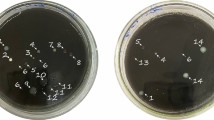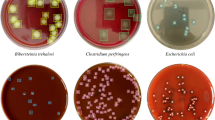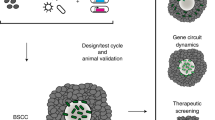Abstract
In vitro cultures of angiosperm organs in association with several common free-living bacteria have resulted in callus formation. The gross morphology and histology of these calluses are similar to crown gall tumours produced at the same time under similar conditions. Controls lacking the associated bacterium show little proliferation of cut-surfaces.
This is a preview of subscription content, access via your institution
Access options
Subscribe to this journal
Receive 51 print issues and online access
$199.00 per year
only $3.90 per issue
Buy this article
- Purchase on SpringerLink
- Instant access to full article PDF
Prices may be subject to local taxes which are calculated during checkout
Similar content being viewed by others
References
La Rue, C. D., Papers Mich. Acad. Sci., 22, 123 (1937).
Zielinski, M. H., in La Culture des Tissues Végétaux, edit. by Gautharet, R. J., 738 (Paris, 1959).
Fallot, J., C.R. Acad. Sci., Paris, 246, 295 (1958).
Author information
Authors and Affiliations
Rights and permissions
About this article
Cite this article
PHILIPSON, W., SHEAT, D. Induction of Callus on Decapitated Hypocotyls of Helianthus by Escherichia coli and other Bacteria. Nature 197, 204–205 (1963). https://doi.org/10.1038/197204a0
Issue date:
DOI: https://doi.org/10.1038/197204a0



